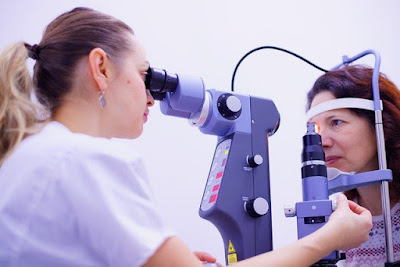Nail disorders: causes, vitamin deficiency and treatment.
Nail disorders
Nails may give a variety of major clues to the diagnosis of systemic disease. First, it is necessary for people to know about some common nail abnormalities. It may surprise you to know that there are over 35 health-related issues that have a direct effect on the nails.
Nail disorders causes
There can be many causes of nails disorders including health, ageing and injury. Whether it is anaemia or physical weakness, skin disease or any other physical disease. Nail is like a window in our body through which we can assess our health. Some diseases in which the nails become dull and damaged are as follows,
- Vitamin A, B, C, B12, zinc deficiency
The morphologic abnormalities of the nails are as follows;
Nail disorders onycholysis
That is the nail's separation from the nail bed, especially of the fingers. Onycholysis is due to excessive exposure to water, soaps, detergents, alkalis, and cleaning agents in the industry.
Candidal infection of the nail folds and subungual region, unless hardeners and drug-induced photosensitive can cause onycholysis, as may hypothyroidism and psoriasis. In dermatophyte infections and psoriasis, discolouration and crumbly thickened nails are observed.
Beau's lines (Horizontal ridges)
Every severe systemic illness can follow Beau's lines (transverse furrows). Nail atrophy may be associated with trauma, vascular, or neurological disorder. Beau's lines (Horizontal ridges) may be due to psoriasis, severe zinc deficiency and uncontrolled diabetes.
Clubbing nail
When the fingertips are enlarged, and the nail is bent downwards, we can call clubbing nail. It can also be linked to liver, kidney cancer, heart disease, inflammatory bowel disease (IBD) and HIV. Nail clubbing can be a symptom of insufficient oxygen in the blood and is associated with cardiopulmonary disease.
Koilonychia (spoon-shaped nails)
One of the most common causes of the spoon-shaped nail is iron deficiency anaemia. In koilonychia, the nails are spoon-shaped, pressed in the middle and raised from the edge. Hypothyroidism, a condition causing iron to accumulate in the body, could also be associated with it. Other causes include fungal infection and malnutrition.
Nail disorders subungual melanoma
The cancer spreads on the nail matrix, which is the tissue under the nail, in this form of melanoma. In orientation, the band is darker to brownish and vertical. This dark band can grow over time, like any other malignancies.
Such significant characteristics include bleeding from the infected side, brittle nails, and skin involvement. Subungual melanoma is not associated with sun exposure, unlike other melanoma forms.
The main cause is known to be an accident or trauma. It is treated with surgery, and survival rates for five years vary from 15% to 80%. The survival chances are much higher if you identify it earlier.
Tinea unguimum (onychomycosis)
It is a natural nail plate fungal infection. Tinea unguimum (onychomycosis) is a trichophyton infection of one or more fingernails or toenails.
Onychomycosis can rarely be caused by saprophytic fungi (< 5 percent). The nails are brittle, lusterless, and hypertrophic and the substance of the nail is friable.
Rippled nails or nail pitting
Rippled nails have small, deep scars on the surface of the nail plate that make them rough and bed discolourations. In a skin disorder called psoriasis, rippled nails are usually seen. Therefore, a rippled nail could never be avoided. In certain arthritic cases and hand eczema, it can occur as well.
Terry's nails (half-and-half nails)
Terry's nails may be linked with malnutrition, hyperthyroidism, diabetes, kidney failure, congestive cardiac failure, and hepatic cirrhosis. The proximal half of the nail is white, and brown/red is the distal half.
Terry's nails can also often be due to age. Don't mix things up terry's nails with the lunula. Lunula is the whitish region of the nails that are half-moon shaped, and it's a common spot.
White spots on the nail
These white spots on the nail are do not cause for worry and, on their own, will disappear or grow out. Nail trauma causes tiny white spots on the nails. It is rare for these tinny white sports to go away in the case of a fungal infection.
Yellow nails
Most people think that nails are only yellow in jaundice. A substance called bilirubin accumulates in the body when there is liver failure and gives nails and eyes a yellow colour, this is the reason nails are yellow in jaundice.
Fungal infections of the nails, heavy carotenoid intake or severe diseases such as lung infection, typhoid disease, diabetes or psoriasis may cause yellow nails.
Smoking can additionally stain nails a yellowish hue. Your nails may additionally yellow with age or due to the use of acrylic nails or nail polish.
Hangnail (agnail)
The hangnail is a condition in which living skin separates and tears (often eponychium) along the nail plate. The most important causes of hangnail are dryness, any good moisturizer can be used to prevent this problem.
Onychorrhexis
It is also referred to as brittle nails, a brittleness of finger or toenail breakage that can result from the excessive chemical intensity, soap, water exposure, and removal of nail polish, anaemia, anorexia nervosa, bulimia, hypothyroidism, or after treatment with oral retinoids.
Cyanosis or bluish nails
Bluish discolouration or cyanosis means that not enough oxygen is supplied to the body. Cyanotic heart disorders are a group of heart diseases that can cause cyanosis and multiple lung diseases, such as chronic bronchitis or lung cancer.
Nail disorders vertical ridges
Typically, vertical ridges are a normal sign of ageing and are not a cause of worry. When you get older, they can become more prominent. Nail ridges may be caused in some cases by nutritional deficiencies, particularly vitamin B12 & magnesium.
Dark discolourations
Dark lines or unpleasant growths on the nail require the doctor's emergency visit because they could be because of melanoma, the most deadly type of skin cancer.
Nail disorders onychophagy
Bitten nails are the result of a habit that inspires the person to chew the nail and harden the skin. Regular manicures or enhancements may prevent the person from biting the nails.
Nail disorders compilation
Toenail changes can lead to an ingrown nail in turn, sometimes complicated by a bacterial infection and sometimes by exuberant granulation tissue. Poor manicure and poor-fitting shoes may cause this complication. The result may be cellulitis.
Nail disorders vitamin deficiency
Just as the rest of the body needs vitamins and minerals, so too do need vitamins and minerals to keep them strong and beautiful.
The following vitamins and minerals are essential for good nail health;
Green leafy vegetables, apple, mango, berries juice, lemon juice, egg, poultry, milk, nuts, almonds, cashew and sunflower seed etc are the best diet for healthy nails.
Nail disorders treatment
Treatment generally requires careful debridement and manicuring and, in fact, reducing sensitivity to irritants (alkali, soaps, detergents, solvents, bleaches, etc).
Removal of the offending lesion can cure longitudinal grooving due to temporary matrix lesions, such as warts, synovial cysts, and other impingements.
Tinea unguimum (onychomycosis) is difficult to treat because of the long duration of treatment needed and the frequency of recurrences.
More readily than toenails, fingernails react. Systemic therapy is required to treat nail onychomycosis effectively. Ultramicronized griseofulvin 250 mg orally 3 times daily for 6 months may be effective for fingernails.
Tinea unguimum (onychomycosis) Griseofulvin therapy or topical medication does not react to the tinea unguimum (onychomycosis) of the toenails. Oral terbinafine 250 mg daily for 12 weeks is the safest medication, which is also FDA approved.
Tags: Nail disorders, Nail disorders causes, Nail disorders vitamin deficiency, Nail disorders treatment,



















